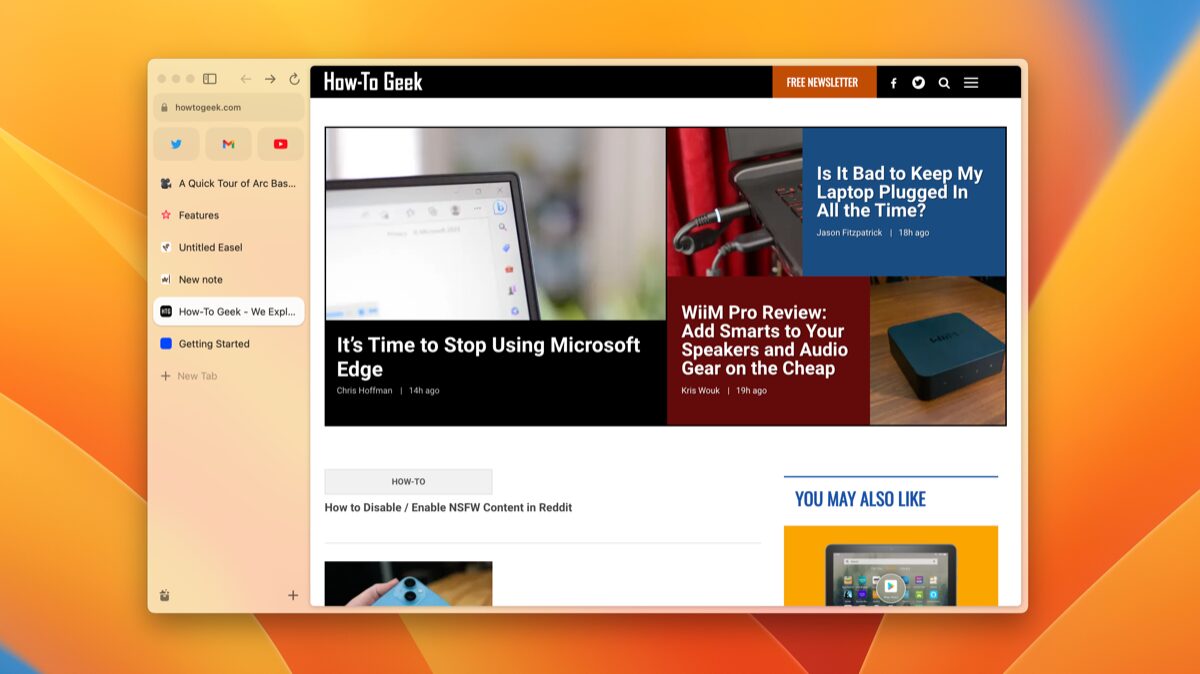Apple Translate vs. Google Translate: Which Is Better?
Quick Links
-
Both Apps Have a Clean Interface
-
Which Devices Can You Use These Apps On?
-
Google Lets You Better Translate Conversations but Has One Drawback
-
Both Let You Download Translations Offline
-
Apple Has a Good Camera Feature, But Google Still Beats It
-
Google Provides Translations for Handwritten Notes
-
Google Wins This Battle
Summary
- Google Translate offers 249 languages, while Apple Translate only supports 19.
- Google Translate supports Android, iOS, iPadOS, and web browser use, with Apple Translate limited to Apple devices.
- Both apps offer a camera feature for translation, but Google Translate allows for handwriting translations.
For the frequent traveler (or curious learner, a must-have in your luggage of travel apps is a translation app. Be it navigating street signs in another country or trying to find the translation for that one word from your native language, a good translation app is essential.
Which is the best translation app for your iPhone: the built-in Apple Translate or Google Translate? Here’s everything you need to know before you make a permanent addition to your list of favorite apps.
Both Apps Have a Clean Interface
The Apple Translate app, which is made for iPhone and Apple devices, fits snugly into the rest of your app suite. Getting used to the sleek interface takes minutes: the app has four tabs (Translation, Camera, Conversation, and Favorites). Once you familiarize yourself with using the Translation tab, you can start saving certain words and phrases to the Favorites tab for easier access. The app supports translation for 19 languages.
The Translation tab allows you to easily switch languages, with the ability to download languages and use grammatical gender for certain languages. What I like most about the Apple Translate app for iPhone is the simplicity of navigation and use. This is also something that the Google Translate app offers.
Google Translate’s interface is minimal, with a lack of tabs. It cuts straight to the chase with its translation features, including typed text, audio, camera, conversation, and drawing mode, all being easy to access when you open the app. You can access your Google profile and add accounts, and manage your downloaded languages. Your favorite translations are saved in Google “Phrasebook,” which is designed as a bookmark feature. You can also save and view transcripts in the app.


Google Translate blows Apple Translate out of the water with the number of supported languages, at a whopping 249 languages. This is thanks to Google’s addition of 110 new languages to the app in 2024 using the PaLM 2 large language model (LLM).
Which Devices Can You Use These Apps On?
Apple Translate, a native app, can only be used on Apple devices, which can be a major restriction for someone who wants to use their translation app beyond just their iPhone. On a compatible device like your iPhone, however, it is a built-in app and does not need to be installed from the App Store. On Apple devices, the app is available if your device is running:
- iOS 14.0 or later
- iPadOS 14.0 or later
- watchOS 11.0 or later
Google Translate, on the other hand, can be downloaded from the App Store for your iPhone, iPad, and on any non-Apple devices you may want to use it on. You can install it as a mobile app for iOS and Android, or use the web application on any other device.
In this category, Google Translate is a clear winner if you like to use your translation across devices that are not restricted to Apple, or simply want to use your translation app on a web browser. Apple Translate works very well if you want to use translations on your iPhone, iPad, or Apple Watch, but it is not the ideal translation app if you want to use translations on a web browser.
Google Lets You Better Translate Conversations but Has One Drawback
Apple Translate’s Conversation tab allows for smooth conversations with two-sided translations between languages. You can download languages, play the translated conversations as you type them, and use auto-translation for a more seamless conversation. Using your microphone, you can also speak to obtain translations instead of typing out phrases or sentences.
My favorite feature about Apple Translate’s Conversation option is the “Face to Face” mode, which splits your screen down the middle, so the person on the other side of your phone can easily type their responses without you handing your phone to them for every response. The default “Side by Side” view is useful too, especially between a group of three or more, which might require passing your phone for responses.
Another feature that comes in handy, especially if you are traveling or speaking to someone whose language you cannot gauge, is the “Detect Language” option, which allows a person to speak into your microphone, detect that language, and provide a translation in the language of your choice.


For Google Translate, conversation mode is a simple tap away. You can seamlessly switch on your microphone and start talking with another person, with Google Translate providing real-time text translations as the conversation flows. Google even gives you an introduction card explaining how to use conversation mode in the language of your choice, so that initiating conversation mode with the other person is much simpler. Once a conversation starts, you can always edit words within the translated text or end conversations.
While Apple Translate offers both text and audio options for conversations, Google Translate keeps it simple with just a conversation mode. Despite Apple Translate’s options, I find myself drawn to Google’s conversation mode solely because of how accurate the translations can sometimes be compared to Apple’s, and the scope of languages supported, which is a big point of contention.
Apple does not support as many languages (specifically local dialects) as Google, which is a major drawback if you are traveling and need to carry out full-fledged conversations in a language not covered within Apple’s limited language offerings.


The only thing that Google Translate is yet to give iPhone/iPad users, which Android users already have, is face-to-face mode. Like Apple Translate’s offering, this splits your screen and offers real-time translations to the person at the other end of your phone.
This drawback is the only thing that makes me switch to Apple Translate on my iPhone when I need to have a conversation with strangers for a smoother translation.
Both Let You Download Translations Offline
With both translation apps, you can download specific languages to take your translations offline. Once you download languages on both apps, you can seamlessly translate between languages even if you have no internet connection. This comes in clutch when you don’t have great network connectivity during travel.


With Apple Translate on your iPhone, you can navigate to your system settings to view and download languages for the app. On Google Translate, downloaded apps can be managed through your Google profile settings.
Apple Has a Good Camera Feature, But Google Still Beats It
With iOS 16 and above, Apple Translate lets you use the camera feature to translate text on items such as menus or signs to the language of your choice. This also lets you translate photos in your gallery, save the translated photo, and share it with your contacts.
This camera feature can be very useful for any photos you may have saved in your gallery with text that you cannot understand and need a translation for.


Google Translate, too, has this camera feature. With Google Lens, you can instantly translate a screen or wall of text in front of your camera or use a pre-existing picture in your gallery.
Compared to Apple Translate, Google Translate’s camera feature is marginally better where it matters: Google Lens lets you identify text quicker, and the translation is much faster than Apple. Apple also makes the translated text pop off the screen more, and the readability can be a bit hard (with the text getting minimized in some instances), which is not an issue I often face with Google.
Another reason why I prefer Google Translate’s camera feature is that you can tap individual translated words and see their meanings, or revert translations to the original text instantly. Google also lets you capture translations with your camera quickly, while Apple requires you to save the translations to your favorites tab (or take a screenshot to save it to your gallery).
On top of this, Google Translate on your mobile browser can be used to translate websites easily. You can also copy and paste documents and long blocks of text into your Google Translate app or browser, although this is only supported by devices with larger screens like your iPad or Mac.
Google Provides Translations for Handwritten Notes
One of the best features that Google Translate provides, which Apple Translate has yet to adopt, is the ability to translate handwritten notes. While Apple Translate supports typed text, audio, and photos, it does not yet offer this feature.
On your iPhone and iPad (as well as Android), Google Translate lets you draw out characters, letters, or sentences to translate. This goes beyond the camera feature that both apps offer, especially when you need to translate words that you cannot capture (for instance, low-resolution images). It also comes in handy when your keyboard does not support the character or language you are trying to translate. This feature is especially useful if you use Google Translate on your iPad and use an Apple Pencil.
Google Translate even lets you write characters more slowly by disabling Automatic Insertion in your settings. While you may be able to use pictures of handwritten text for translations on Apple Translate’s camera feature, Apple has yet to adopt the drawing feature.
Google Wins This Battle
|
Criteria |
Apple Translate |
Google Translate |
|
Languages |
19 |
249 |
|
Camera feature |
Available |
Available |
|
Handwriting translations |
Unavailable |
Available |
|
Device compatibility |
iOS, iPadOS, watchOS |
iOS, iPadOS, Android, web browser |
My biggest gripe with the Apple Translate app is the limited collection of available languages, which, at a measly 19, does not compare to Google’s large collection of 249 languages. For someone like me, who often uses my iPhone to translate words from Tamil and Malayalam to English, Apple Translate is virtually useless, with the only Indian language within its scope being Hindi. With essential dialects for languages like Mandarin and Spanish still missing, Apple Translate needs to up its game in terms of language options and catch up to its competitors.
While Google Translate does not support face-to-face mode for iPhone users, it easily wins the battle against Apple Translate with its language offerings, more accurate translations, and marginally better feature set. It’s also a better translation resource for websites and documents, and with its transcript support, it can be what you’re looking for if you want to do some more advanced translations.


















